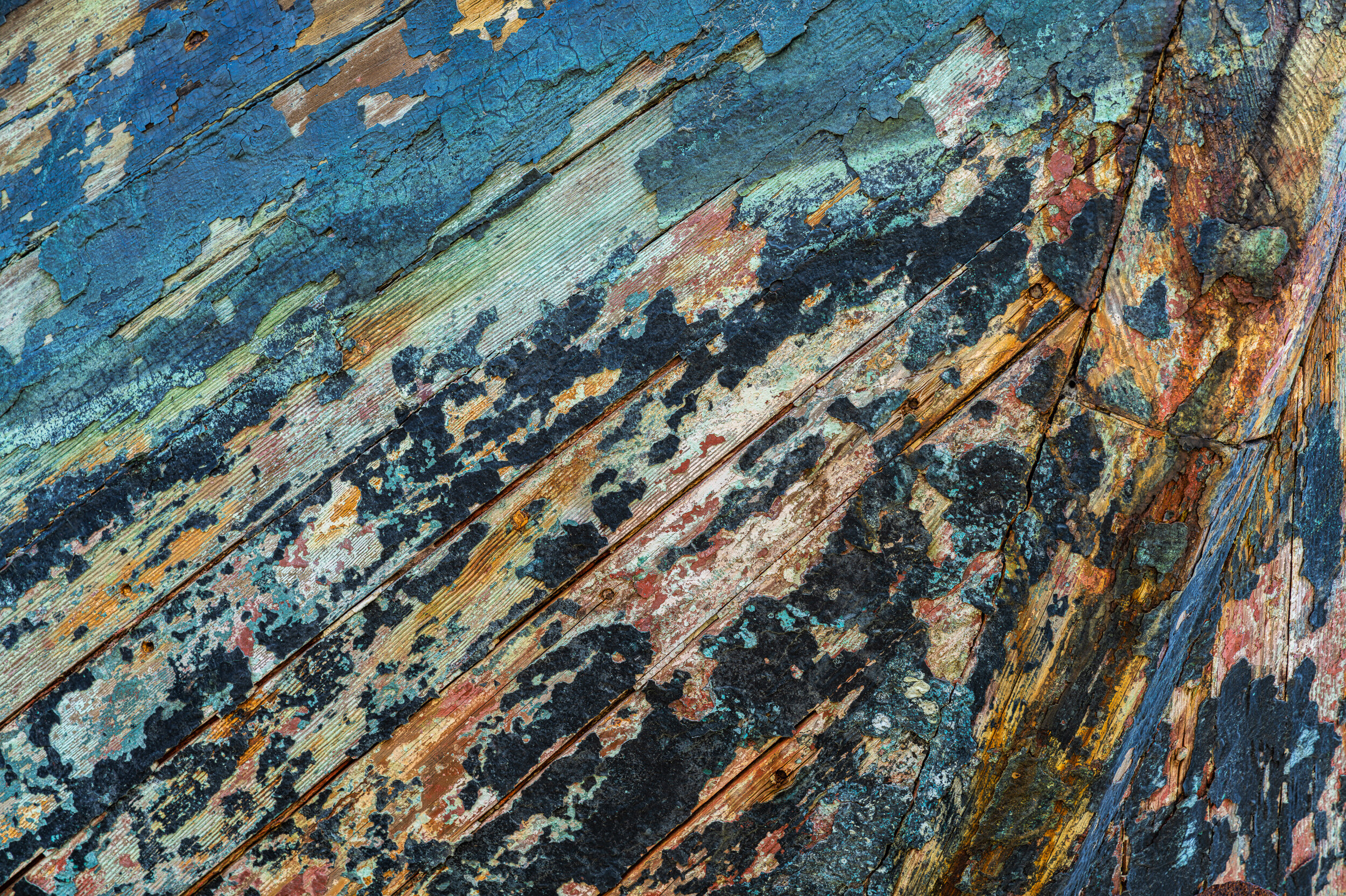A lifetime ago (it seems), I was a sailor on a wooden tall ship. I lived aboard for a couple of years as me and my crewmates travelled from port to port teaching people about history. While we weren’t working with school kids and tourists, we were working on the boat. Wooden boats are continuously trying to disassemble themselves and dissolve into the sea, and only dedicated effort involving a lot of chemicals that keeps them afloat. I learned in my time living in and loving a wooden boat that they are precious works of incredible craftsmanship, designed and built by people who have had millennia to refine how keels meet frames and planks, (when properly formed) nudge together to form a hull that will endure countless indignities from waves, docks, fishing gear and creatures big and microscopic.
So I have a deep appreciation for wooden boats.
Near Coos Bay, Oregon there’s a little fishing village called Charleston and people have been using boats to make a living for many generations. A walk down the docks there today will bring you close to all manner of working boats made of metal, fiberglass, cement and wood. 100 years ago, all of the boats would have been made of wood, many built right in Charleston from the Douglas Fir, Sitka Spruce, and Western Red Cedar that grows to towering heights along the coast. When built well and maintained with pride, these hard-working boats are capable of over a century of service. It’s still possible to find old wooden fishing boats on the Oregon Coast that are going strong. One thing I learned about wooden boats which is somewhat counter-intuitive, is that wood loves sea water. While the salty ocean water is murder on metal, wood does well soaked in it. Unfortunately, the critters that call the ocean home also love wood and every hull that sits in sea water will in time accumulate a hanging garden of plants and animals, each doing some damage to the wooden planks of the boat. Ancient sailors learned this and clad their hulls in copper, which is toxic to living things. Later, we learned how to blend copper and other inhibitors into paint, which for a while keeps the flora and fauna of the sea at bay. Combine this ceaseless struggle with the ticking clock of metal corrosion from the salt and electrical currents that boats create, and you have a boat with a finite life span.
In Charleston, sometimes that life ends at the dock when a fitting or seam finally fails and the vessel sinks in their slip. This happens at least once a year in the little harbor. Sometimes the vessel meets its end at sea, all too often taking the crew down with it. For the old boats that reach the end without sinking, they are gently hoisted from the water and placed on blocks and stands in the Charleston boat yard. There they dry out and slowly, (some of the tougher ones very, very slowly), they fall to pieces. Between their last day of work and the scrap heap, they stand tall and proud through the blazing sun of summer, the lashing rain of winter, and the caressing fogs that usually shroud the coast
This summer, I had the opportunity to visit the old boats of the Charleston boat yard. Once titans of the southern Oregon Coast’s legendary fishing industry. The F/V Rainbow’s crew pulled millions of pounds of salmon, tuna, rock fish, and crab from the merciless Pacific, but now her graceful hull slumps under the weight of her impending demise. The white “X” on her bow indicates that she is a lost cause and will eventually be dismantled. Her wooden parts will be burnt and her metal recycled if it isn’t too corroded. Until she meets that end, rust and rot will do their work. It’s a remarkably undistinguished conclusion to what certainly is a incredible story.
As I walked around the old boats, I began to see the various textures, colors and patterns of the old, weathered wood and I found that when I got closer with my camera, I could see a miniature summary of the larger vessel’s hard life in the streaks fo rust, the chipped and peeling paint, the pitted metal and the scarred wood. In a small section of a boat’s hull, I could see all of the torturous conditions, the punishing work of hauling gear loaded with fish, the endless twist and turn of the restless waves, and the ceaseless assault of decay.
In these vignettes, I could appreciate the careful hand of the worker who carved the joints in the heavy timbers of a boat’s bow stem. Having done that kind of work myself, I could appreciate the tiny lumps of oakum that is still tucked between the hull planks, providing the water-tight seal every boat needs. Knowing that each nail was driven by a skilled hand and even long after that worker has passed, the nail still holds fast despite the rust working to loosen its grip.
I wanted to capture the minuscule details of these old boats, so I tried a technique that I had not used before. My Sony A7RIV camera is capable of shooting 4- and 16-shot pixel shift images. The feature is not something many people use. I would venture that most users of the A7RIV have never turned the feature on. Here’s a quick explainer on what pixel shift is:
When the sensor in a digital camera is exposed to light (during an exposure), the light is received by a fine grid of photosites, each fitted with a red, green or blue filter. This grid of sites is arranged in a pattern, in the case of many modern digital cameras, a pattern known as a “Bayer” pattern. I presume some clever person named Bayer is to blame for this idea. The photosites gather their data and the pattern is used to interpolate the brightness, detail and color of the subject being photographed. The process of interpolation involves a bit of guesswork as each photosite (hell, let’s call them pixels), is filtered for a specific color and not receptive to all three (red, green and blue). So the camera’s brain uses the data from neighboring pixels to make assumptions about the information for each pixel. This works amazingly well and unless you are zooming waaaaaay in on a shot, you won’t know that the detail is a but mushy. On the Sony, (other cameras can do this too, but I’m only used to the Sony way, so bear with me) the sensor is capable of physically moving within the body of the camera. This sensor nimbleness is what allows us to enjoy such marvelous image stabilization. So the Sony In Body Image Stabilization system (IBIS) can wiggle the sensor, so why not use that to nudge the sensor side-to-side and up-and-down a precise amount each shot to put the pixels over each detail several times, allowing a red pixel, a green pixel and a blue pixel to look at each thing that a single color-filtered pixel would capture in a single-shot exposure. The Sony allows for 4-shot pixel shift images, which gives a resulting image file that has greater detail but keeps the native resolution of the sensor, (because the sensor is only shifting one pixel in each direction for the four shots). These four shots are combined with software later to create the detailed image. The A7RIV took this further by allowing the sensor to shift 1.5 pixels over 16 exposures to bring the crazy detail and increased resolution. In my case, the normal 60 mp of my camera is boosted to 240 mp for a 16-shot pixel shift image composite. Nuts.
So to make this happen, I had to activate the function on my camera. I also needed to be sure that nothing was moving in the shot as all 16 images need to sync up visually. In the case of the boats, they were perfect for this. Obviously, I had the camera locked down tight on a sturdy tripod. There’s no hand-holding in pixel shifting my friends! So my camera pops off 16 frames and when I get home I can run the files through a special application that combines them into the final image. For me, the Sony software that they say will do this just sat there looking at me like my kids do when I ask them to clean their rooms. I was able to find a third-party app called PixelShift2DNG that looked for the files in my hard drive, then combined them into .dng files.
These files are big. Each weighs in at 240mb and spans 19120 x 12736 pixels.
In Lightroom, the 16 files that make up the massive .dng file look like any other exposure file. In fact, they can be treated like a regular file. Only when you combine them can you make the magic happen.
So why in the world would I want a 240mp file? That’s a fair question. These pixel shift files are so big that my iMac (2014 model) really strains to handle them. Obviously, I wouldn’t want to make a lot of these files. But in this case, the subject matter was so incredibly detailed and static I had to capture it with the deepest fidelity I could get. What’s brilliant about the Sony A7RIV is it’s a “normal” camera that is leveraging existing tech to reach up into medium format territory, and the feature is optional. Kind of like having super boost mode.
So doing all of this heavy lifting is meaningless if the files aren’t worthy of massive prints. I haven’t sent one off yet for that treatment, but I will soon. Here’s one I want to see printed big:
Cool color and texture, right? This is a JPEG sized to fit on my blog (2500px wide). Notice that little spot of cobweb in the lower middle of the shot? Here it is cropped:
Notice how the cobweb still has incredible detail, even cropped? This is a 2500px JPEG. Let’s go in closer:
Years ago I was in an art gallery and I saw a massive print of a landscape photo. It was so crisp and clear I felt like I could reach in and touch the rocks. I’ve strived for that kind of fidelity for a long time, and I’ve always felt like my images look nice on the screen, but when I zoomed in close and pixel peeped, there was softness and a lack of realism. Now with the Sony pixel shift mode on my A7RIV, I can get the details I’m looking for.
So here are some of my old boat pixel shift images. I’ll let you know how the prints turn out.










